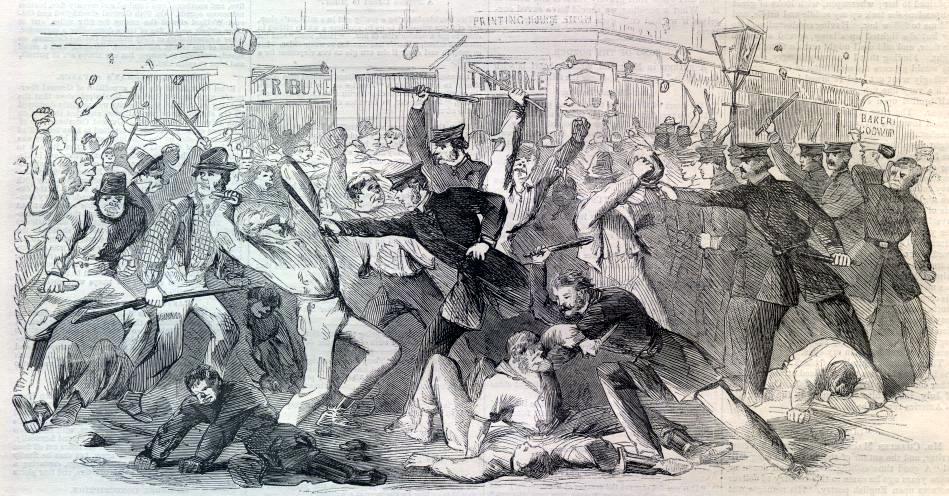Film. By Deb Ellis and Denis Mueller. 2010. 78 minutes.
Documentary on life and work of Howard Zinn.
Continue reading
Book — Non-fiction. By Howard Zinn. 2005, with a new introduction by Anthony Arnove in 2015. 784 pages.
Howard Zinn's groundbreaking work on U.S. history. This book details lives and facts rarely included in textbooks—an indispensable teacher and student resource.
Continue reading
Teaching Activity. By S. J. Childs. Rethinking Schools. 6 pages.
The author describes how she introduces students to the classic 1953 film, Salt of the Earth, about a miners’ strike in New Mexico.
Continue reading
Teaching Activity. By Bill Bigelow. Rethinking Schools. 13 pages.
A role play on the origins of the modern high school allows students to question aspects of schooling they often take for granted, such as tracking (“ability grouping”) and standardized testing — and to reflect on the racial biases of these so-called reforms.
Continue reading
Teaching Activity. By Bill Bigelow. 7 pages.
Students read a poignant excerpt from Agnes Smedley's novel, Daughter of Earth, and use it to think and write about how schooling—their own included—teaches lessons about social class.
Continue reading
Teaching Activity. By Bill Bigelow. 9 pages.
Students are invited to solve a mystery, using historical clues, about the real story of the Draft Riots.
Continue reading
Book — Non-fiction. By Ronald Takaki, with a foreword by Clint Smith. 2023. 576 pages.
A multicultural history of the United States, in the voices of Indigenous people, African Americans, Jews, Irish Americans, Asian Americans, Latinos, and others.
Continue reading
Teaching Activity. By Gayle Olsen-Raymer. 15 pages.
Questions and teaching ideas for Chapter 3 of Voices of a People's History of the United States on the role and dissent of indentured servants in American colonial history.
Continue reading
Teaching Activity. By Gayle Olson-Raymer.
Questions and teaching ideas for Chapter 4 of Voices of a People's History of the United States on class differences and internal dissent before and during the Revolutionary War.
Continue reading
Teaching Activity. By Gayle Olson-Raymer. 16 pages.
Questions and teaching ideas for Chapter 5 of Voices of a People's History of the United States on the Revolutionary War as "a rich man's war and a poor man's fight," as well as the failure of early Americans to complete a full revolution.
Continue reading
Teaching Activity. By Bill Bigelow. Rethinking Schools. 5 pages.
A trial role play helps students reflect on responsibility for the deaths of Irish peasants during the so-called potato famine.
Continue reading
Reading for Teachers. By Bill Bigelow. 7 pages.
Author describes how students applied strategies from the Lawrence strike to their own present day activism.
Continue reading
Teaching Activity. By Gayle Olson-Raymer. 16 pages.
Questions and teaching ideas for Chapter 10 of Voices of a People's History of the United States" on "The Other Civil War — the class conflict fought by the poor in the north and south.
Continue reading
Teaching Activity. By Gayle Olson-Raymer. 18 pages.
Questions and teaching ideas for Chapter 11 of Voices of a People's History of the United States on the Gilded Age.
Continue reading
Teaching Activity. By Gayle Olson-Raymer. 20 pages.
Questions and teaching ideas for Chapter 15 of Voices of a People's History of the United States on the economic and social realities of the 1920s and 1930s, as well as the corresponding rise of unions and the Communist Party.
Continue reading
Teaching Activity. By Tasha Boettcher.
Questions and teaching ideas for Chapter 17 of Voices of a People's History of the United States on the long Civil Rights Movement in America.
Continue reading
Teaching Activity. By Mike Benbow and Robin Pickering. 17 pages.
Questions and teaching ideas for Chapter 18 of Voices of a People's History of the United States on opposition to the Vietnam War.
Continue reading
Teaching Activity. By Ron Perry.
Questions and teaching ideas for Chapter 21 of Voices of a People's History of the United States on the recently rising disparities in power, wealth and quality of life in America.
Continue reading
Book — Non-fiction. By Howard Zinn, adapted by Rebecca Stefoff with additions by Ed Morales. 2022. 544 pages.
A young adult version of the best-selling A People’s History of the United States, ideal for 6th through 9th grade students.
Continue reading
Book — Non-fiction. By Stephen Pimpare. 2008. 322 pages.
A vivid description of poverty from the perspective of poor and welfare-reliant Americans, from the big city to the rural countryside.
Continue reading
Film. Written and directed by John Sayles. 1987. 132 minutes.
A feature film depicting a strike in a mining town in Appalachia and the struggle for solidarity across racial lines.
Continue reading
Songs. By Ry Cooder. 2005. 70 minutes.
The story of the Chicano community bulldozed to pave the way for the Dodger Stadium in Santa Monica, told through bilingual songs.
Continue reading
Poster and book. By Stephen J. Rose. 2007; updated 2015. 56 pages.
Visual representation of the distribution of wealth in the United States.
Continue reading
Book — Non-fiction (with CD). Edited by William H. Chafe, Raymond Gavins and Robert Korstad. 2008. 346 pages.
Extensive oral history of African American life under segregation.
Continue reading
Book — Non-fiction. By Howard Zinn. 2006. 293 pages.
A collection of essays on American history, class, immigration, justice, and ordinary citizens who have made a difference.
Continue reading


















